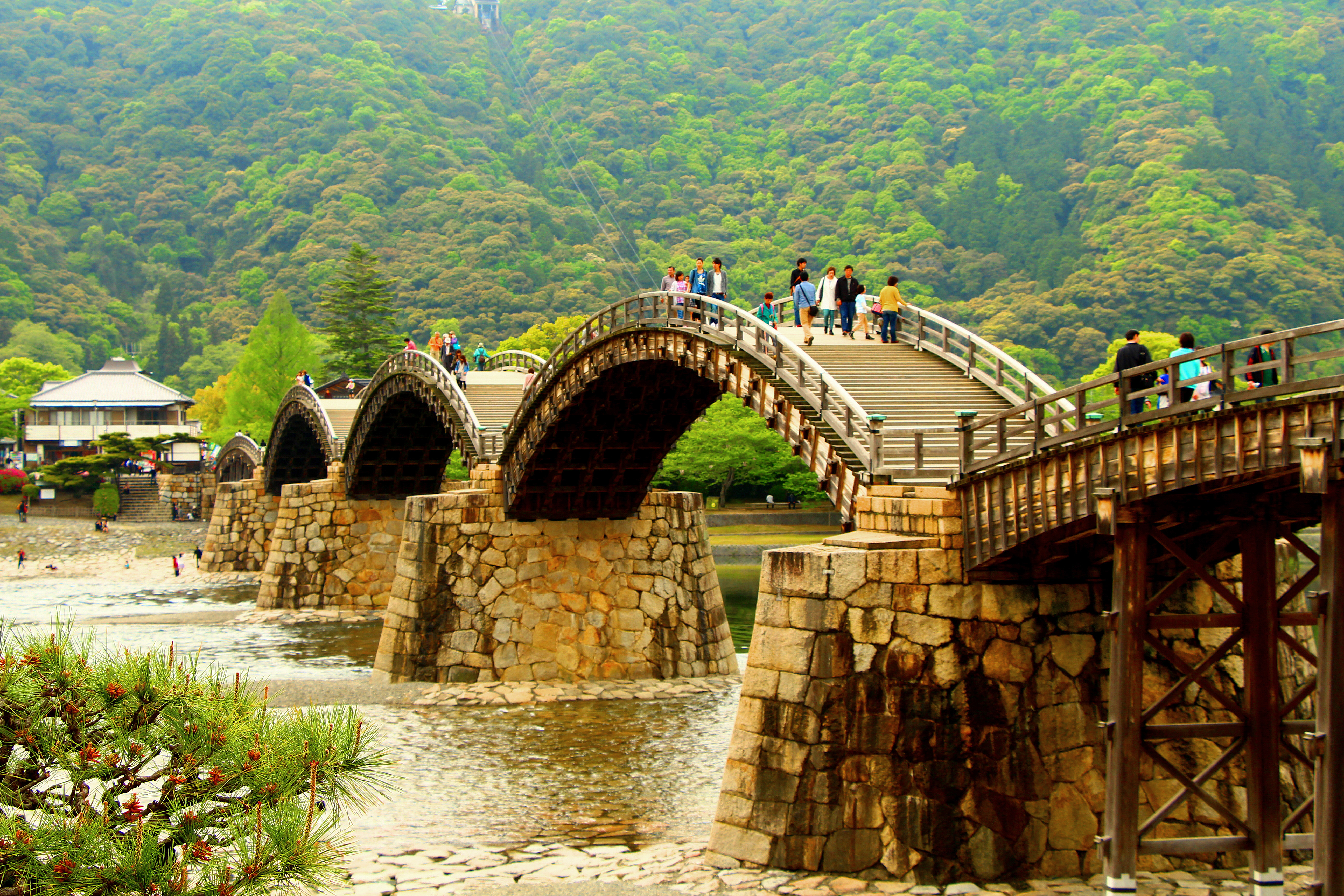Below the bridge, flat-bottomed boats are ferrying people across the Nishiki River, just as they did centuries ago — back when commoners were not permitted to walk over its wooden arches, and even centuries before that, when there was no bridge at all. The long wooden craft glide with hypnotic languor as boatmen punt them across the water.
We're standing on Kintaikyo Bridge in Iwakuni, Yamaguchi Prefecture — one of the Nihon Sanmeikyo (Three Famous Bridges of Japan). So proud are the Iwakuni residents of the bridge, they set aside April 29 (a public holiday for the birthday of Emperor Showa) as a day to celebrate it. And that is why my wife and I are here — us two and 40,000 other people.
Why is the bridge so revered? Well, it's obviously beautiful and, with its five elegant wooden arches (originally built without a single nail) supported by three stout stone piers, it's an engineering marvel, too. But to grasp the full story you have to go back more than 400 years when Hiroie Kikkawa (a man who would become Lord of Iwakuni), had just been defeated in the Battle of Sekigahara in 1600.



















With your current subscription plan you can comment on stories. However, before writing your first comment, please create a display name in the Profile section of your subscriber account page.